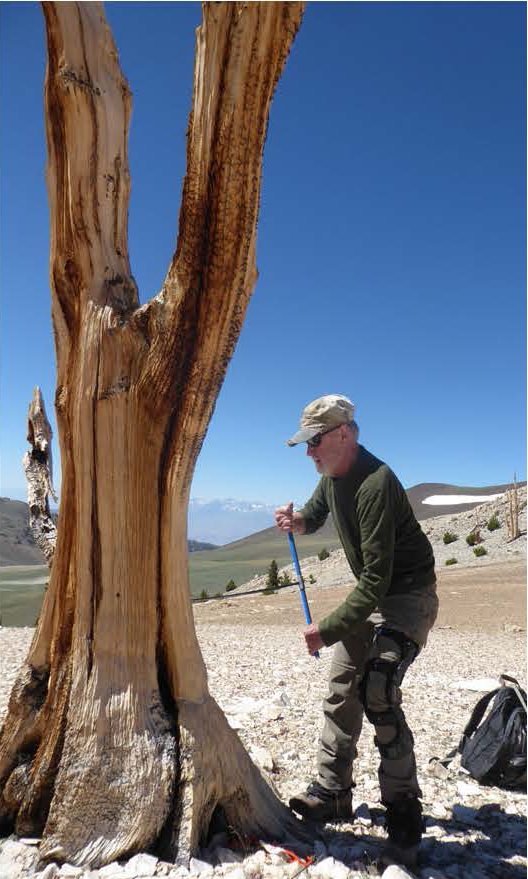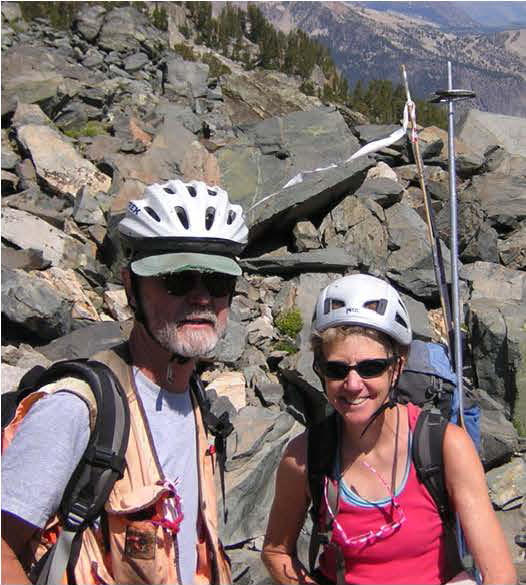Bob Westfall
Bob Westfall, Class of 1967, 1972

Bob began working for the USA Forest Service Pacific Southwest Research Station in 1983. Initially, he was a contractor working for the IFG Placerville Lab with the late Tom Ledig. He also worked for Valerie Hipkins at NFGEL and her predecessor, Sharon Friedman. He worked for Jay Kitzmiller, the R5 regional geneticist, but in 1988, he began term appointments as a biostatistician. Then in 1995, he received a permanent position as a staff scientist with Connie Millar as his supervisor.
Bob was a pioneer in the multivariate analysis of molecular genetic markers, but he mentions that is now irrelevant. “C'est la vie!” he says. In the last 25 years, Connie, Diane and Bob have been working on dendrochronology and during the last 10 years, also the American pika.
 Bob volunteered for the draft right out of high school and later was stationed in San Juan, PR, where he worked in communications and eventually became a cryptographer. After release from active duty, he then got a degree in forestry at Michigan State in 1967. During the summers, he first worked on the Lassen NF as a TSI crewman and fire helitack crewman and then on an insect survey crew with the Central States Station in East Lansing, MI. Bob went on to earn a PhD in plant physiology and genetics in 1972. Bob took a post-doc position with PNW in Corvallis, OR which is how he first got to know scientists at IFG. In Dec 1972, he got a position on the faculty at the SUNY College of Environmental Science and Forestry in Syracuse, NY, where he taught and researched plant physiology and genetics. At ESF, he participated in the development of urban forestry as a study area. In 1980, he followed his wife to CA, where she got a position in student housing at UC Davis and later became Director of Campus Recreation at UCD.
Bob volunteered for the draft right out of high school and later was stationed in San Juan, PR, where he worked in communications and eventually became a cryptographer. After release from active duty, he then got a degree in forestry at Michigan State in 1967. During the summers, he first worked on the Lassen NF as a TSI crewman and fire helitack crewman and then on an insect survey crew with the Central States Station in East Lansing, MI. Bob went on to earn a PhD in plant physiology and genetics in 1972. Bob took a post-doc position with PNW in Corvallis, OR which is how he first got to know scientists at IFG. In Dec 1972, he got a position on the faculty at the SUNY College of Environmental Science and Forestry in Syracuse, NY, where he taught and researched plant physiology and genetics. At ESF, he participated in the development of urban forestry as a study area. In 1980, he followed his wife to CA, where she got a position in student housing at UC Davis and later became Director of Campus Recreation at UCD.
One of the earliest studies that Bob and Connie did together was of a mixed conifer stand, dominated by whitebark pine that grew at 3000 m (10000 ft), south of June Lake, from 800 AD to 1350 AD that was killed by a volcanic eruption. Their analysis indicated that temperatures were about 3 degrees Celsius warmer than today. In addition, Bob and Connie have surveyed the occurrence of rock glaciers (see the photo below) and related periglacial features in the Great Basin and estimated the hydrological impact of these features.

They have also studied the temperature behavior of periglacial features, finding that these features are colder than the surrounding landscape and they are highly resistant to warming and thus, may serve as microrefugia in a warming climate. They also published a paper on a survey of American pika populations in the Great Basin; this paper was awarded the paper of the year by the editors of the journal. They will soon publish a paper on tree ring chronologies in limber pine in the Great Basin. One is 4,000 years old, another 3,000 years old and a couple about 2,000 years old. They started collecting data for that study in 1997 and have received enthusiastic reviews of that paper.
Bob’s primary hobby is his work. However, he likes to cook, often using complicated recipes. He also likes music: classical, especially Baroque and 20th century, folk and Bluegrass, blues, hard rock, traditional Irish music, and alternative country.
We thank Bob for his years of service and contrary to the Bluegrass song Old and in the Way, he quotes as saying, "Old and in the way, that's what I heard them say. They used to heed the words I said but that was yesterday. Gold has turned to grey; youth will fade away. They'll never think about you 'cause you're old and in the way”, we will never think of him that way and he will be missed!
Courtesy of the United States Department of Agriculture, Forest Service, Pacific Southwest Research Station



 Print
Print Email
Email
